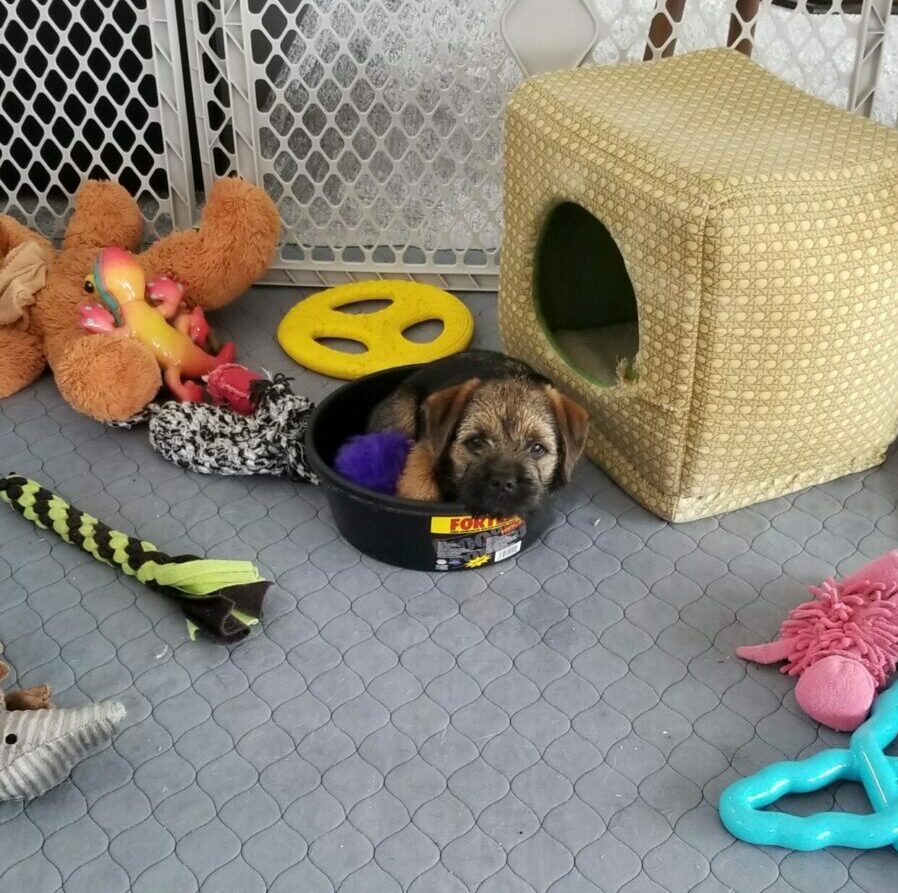Successful pre-pet planning begins with a little foresight and preparation for the first few days together. Set yourself and your new pet up for success from the get-go and begin to foster a strong relationship built on trust and empathy.
Before you get your pet, take the following steps:
Puppy- or Kitten-Proof the Home
Before bringing your new puppy or kitten home, make the environment safe for your new pet. Puppy- and kitten-proofing not only protects your new pet from hidden dangers, but also safeguards your belongings from destruction. Yes, we are talking about your favorite rugs, drapes, furniture, household electronics, and knick-knacks. Puppies and kittens are opportunistic and hard-wired to explore everything. Everything accessible is a potential chew toy or scratching post. Don’t worry! – it’s not forever. By controlling your pet’s experiences now, your puppy or kitten will learn to chew and scratch appropriate items, not your favorite shoes, clothing, and antiques.
Think about the three-dimensional space your pet will occupy. Crawl around on all fours for a pup’s-eye view. As you look about, check for nooks and crannies where your pet could become entrapped. Gaze from below the furniture onto the couch and then onto tables, counters, and shelves for a cat’s-eye view. Temporarily remove items that may pose an environmental hazard or be chewed, soiled, scratched, or knocked over.
Puppies are notorious for running, jumping, digging, mouthing, and chewing. Consider temporarily removing a cherished piece of furniture or high-dollar area rug. Washable area rugs are a great easy-to-clean option for when spills and accidents occur.

From the day you bring them home, kittens are adept at leaping, climbing, pawing, and clawing. They may chew, claw, or climb tablecloths and curtains. Any unstable object is likely to be pawed, pulled, or knocked over.
Dangling chargers, cables, speaker, or electrical wires are of interest to puppies and kittens alike. Tuck them away or wrap cords in a protective cover to reduce the risk of electrocution, burns, or fire. Cabinets and doors should be secured with childproof locks to prevent your pet from opening them and ingesting toxic chemicals and/or household cleaners.
Get Necessary Supplies
Purchase cages or crates, baby gates or exercise pens, puppy or kitten food, bowls for food and water, a leash, harness and treat bag, a variety of appropriate-size toys and food puzzles, litterbox and litter, and a scratching post or cat tree.
Being comfortable with confinement is an important life skill for dogs and cats to learn at a young age. Whether for travel, boarding, veterinary care, or grooming, your pet will need to be confined at some point in his life. Incorporate confinement as a positive experience into daily interactions with your new pet.
Physical barriers and confinement allow you to manage or control your pet’s access to certain areas and items in the home. Cages and crates can keep your stuff safe and provide your pet with a safe haven for when you cannot actively supervise them. Baby gates and exercise pens can allow your pet to become acclimated to a limited area of the home. Providing cats with a multi-level cat cage allows them to perch up high where they can see what’s going on around them.
Think about where you want your puppy or kitten to learn to eliminate. Kittens, when provided with fresh and clean litter in an easily accessible litter pan, often potty train themselves. Puppies on the other hand, need to learn where we want them to eliminate. Housetraining is part of having a puppy or adopting an adult dog and your new canine housemate of any age is bound to have a few accidents as he settles in and learns where you want him to go. Area rugs and bathmats are absorbent surfaces that resemble absorbent puppy potty pads, so they can often be mistaken for a human-approved elimination area.
Develop a Daily Schedule
To successfully housetrain and care for your pet, write down a daily schedule and decide who will be responsible for feeding, training, taking the puppy outside to eliminate or cleaning the kitty’s litter box. A handy checklist prevents oversights.
The schedule must include appropriate physical activity, social interactions with family members, and exploratory activities.
Plan Introductions to Resident Pets
If you already have other pets at home, consider how they will respond to a new puppy or kitten. Have a plan to gradually introduce them and be sure to make the first introduction positive. You might need to brush up on training resident pets and seek the assistance of a Fear Free Certified Trainer. Puppy- or kitten-proof the house and set up confinement areas in advance of your new pet’s arrival, so resident pets can become accustomed to the changes beforehand.
Ease the Transition to Your Home
Calming supplements and synthetic pheromones can help to make the transition as Fear Free as possible. Zylkene (alpha-casozepine) is a tasty natural substance found in milk that can promote calmness in puppies and kittens. It doesn’t make pets drowsy and can be used short- or long-term. A little nutritional help can ease the stress of travel and moving into your home.
With a little preparation and planning, transitioning your new family member into the household will be a smooth and enjoyable process, enhancing the bond between the two of you.
This article was written by board-certified veterinary behaviorist Dr. Kenneth Martin and/or veterinary technician specialist in behavior Debbie Martin, LVT.
Brought to you by









